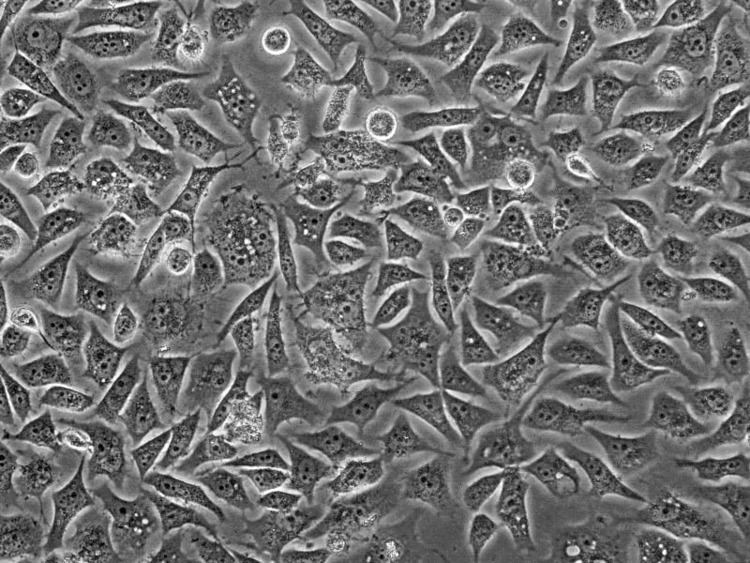 | ||
PC3 (PC-3) human prostate cancer cell lines are one of the cell lines used in prostate cancer research. These cells are useful in investigating the biochemical changes in advanced prostatic cancer cells and in assessing their response to chemotherapeutic agents. Moreover, they can be used to create subcutaneous tumors in mice in order to investigate a model of the tumor environment in the context of the organism.
Description
PC3 cells have high metastatic potential compared to DU145 cells which have a moderate metastatic potential and to LNCaP cells which have low metastatic potential.
PC3 cell lines were established in 1979 from bone metastasis of grade IV of prostate cancer in a 62-year-old Caucasian male. These cells do not respond to androgens, glucocorticoids or fibroblast growth factors, but results suggest that the cells are influenced by epidermal growth factors.
PC3 have low testosterone-5-alpha reductase and acidic phosphatase activity, do not express PSA (prostate-specific antigen), and are PSMA-negative (prostate-specific membrane antigen).
Furthermore, karyotypic analysis has shown that PC3 are near-triploid, presenting 62 chromosomes. Q-band analysis showed no Y chromosome. From a morphological point of view, electron microscopy revealed that PC3 show characteristics of poorly-differentiated adenocarcinoma. They have features common to neoplastic cells of epithelial origins, such as numerous microvilli, junctional complexes, abnormal nuclei and nucleoli, abnormal mitochondria, annulate lamellae, and lipoidal bodies.
